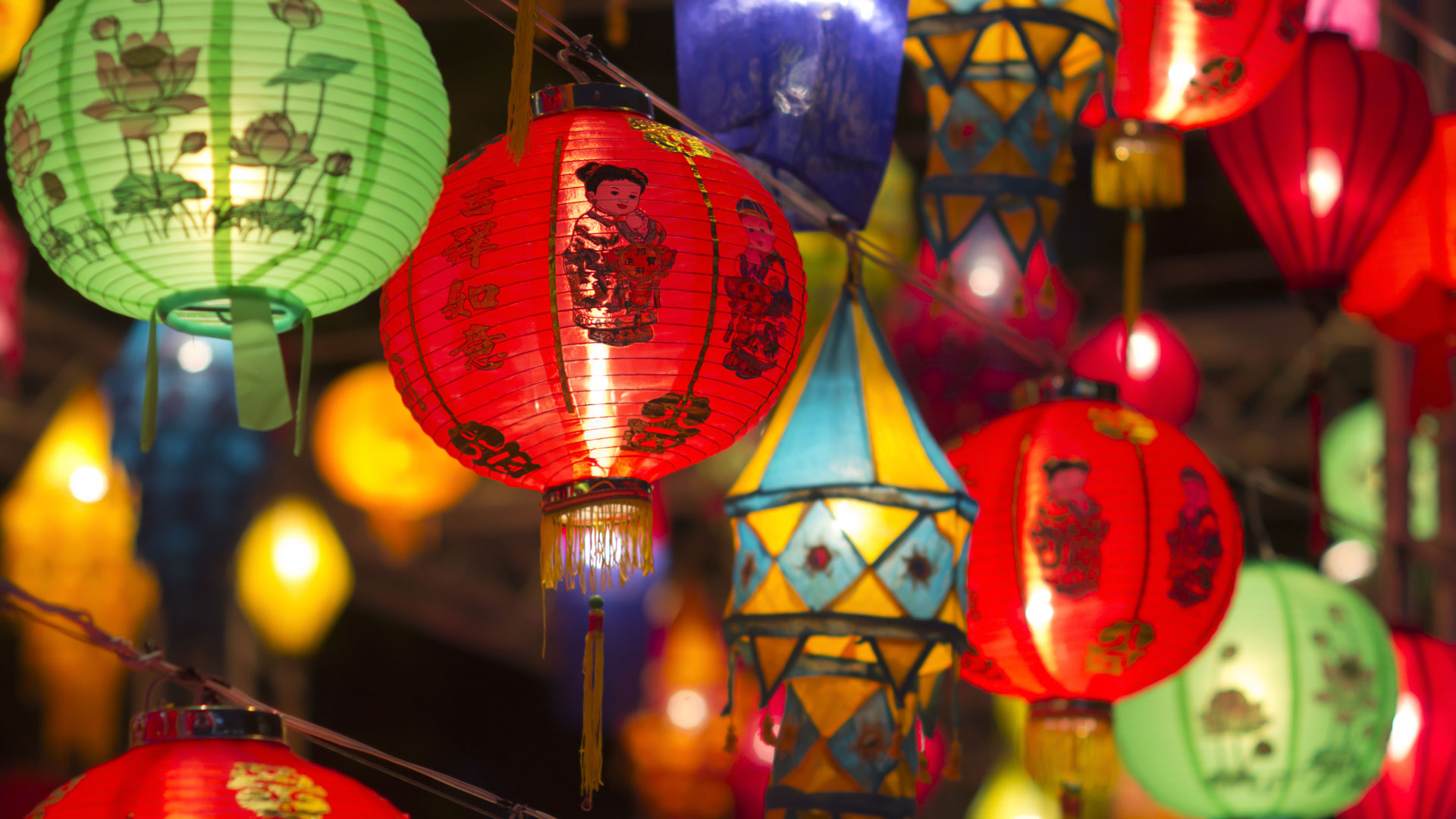Get the right experience for you. Please select your location and investor type.
IMPORTANT NEWS: Transition of investment management responsibilities
First Sentier Group, the global asset management organisation, has announced a strategic transition of Stewart Investors' investment management responsibilities to its affiliate investment team, FSSA Investment Managers, effective Friday, 14 November close of business EST.

Family companies are the real attraction of investing in Asia
Why is Asia still regarded as a separate asset class by investors? At first glance, it looks like an artificial construct, made up of 15 countries with very little in common, other than crude proximity on a global map.
Asia as a separate asset class?
There is not even a daily flight between Beijing and Delhi. Thirty years ago, investors were attracted to the Region by the alluring promise of economic convergence with the west and political reform. Today, these historic arguments are less convincing. For many Asian countries, economic convergence has largely happened. Taiwan now has a greater income per capita than Denmark. South Korea has a higher income per capita than Spain. China is now classified as a “high human development” country by the UN1. In terms of political reform, it is a similar story of progress and convergence. Thirty years ago, Asia was dominated by dictators and strongmen. Since then, investors have benefited from the development of democratic governance in many, though not all, countries. South Korea, for example, elected its first leader by popular vote in 1988, Taiwan in 1996 and Indonesia 1998. There are, of course, plenty of exceptions. Economic convergence is still a long way off for some Asian countries and political reforms are by no means uniform. However, these exceptions are no longer reason alone to put such disparate countries into the same investment category.
Family-controlled companies
Where then does that leave Asia as a separate asset class? Fortunately (for fund managers with large Asian strategies like ourselves!), there is still at least one compelling reason for retaining Asia as a separate asset class: the Region is home to the world’s greatest collection of good quality, listed, family-controlled companies – and good family companies make for some of the very best investment opportunities around. Approximately two-thirds of listed Asian companies are controlled by families or their foundations. The opposite is true globally, with approximately two-thirds of listed companies having no identifiable long-term steward. Crucially, this prevalence of family-controlled companies is not limited to one part of Asia. It applies equally from Sri Lanka to Singapore to South Korea. It is perhaps the one feature that binds all Asian markets together.
Patience pays
Why does this matter? For long-term investors, the attractions of family companies are threefold. Most significantly, the best companies require the ability to take long-term decisions that may not generate returns for many years or even decades. Hong Kong and China Gas is a good example of the benefits of patience. The company is Hong Kong’s largest public utility and is controlled by the Lee family. After many years of supplying gas to Hong Kong households, the Lee family started to look for overseas investment opportunities in the early nineties. In 1993 they undertook a first feasibility study of mainland China and by 1995 their first mainland joint ventures had commenced operations in Panyu and Zhongshan.
Over the coming years, the family slowly reinvested cash flows from the mature Hong Kong business into their fledging mainland business. By 2002, the company had over 20 city-gas joint ventures accounting for just 2% of revenues. At this point, seven years after their first investment, the market was still assigning no value at all to the company’s mainland operations and would have been happy to see it shut down. They were wrong. Roll forward another fifteen years and today mainland China accounts for almost 60% of revenues, over 90% of customers and over 50% of the value of the business2. The share price has risen over 1300% since that first investment in 1995. Without the time horizon provided by the long-term steward, it is highly doubtful whether the mainland China business would have developed so successfully.
It is a similar story for many of Asia’s quality companies. Vitasoy, a Hong Kong based soya milk company, started selling soya milk into China in the early 1980s. By 2001 they were still loss-making. They persisted nonetheless and their patience was finally rewarded. Today, mainland China accounts for approximately 40% of group profits3.
This “crossing the river by feeling the stones” approach to business has been particularly rewarding for companies entering large, untested markets such as China, India and Indonesia. Poor quality companies have often rushed in quickly and tried to conquer the whole market in one giant leap, failing in the process. Good quality companies, such as Hong Kong and China Gas, have taken a much more patient and measured approach that has paid off over the course of decades, rather than years and months. They have only been able to act patiently because they have patient owners. In today’s era of casino capitalism, having a patient owner is perhaps the greatest competitive advantage of them all, particularly given the collapse in time horizons of institutional investors. When all around are focused on next quarter’s earnings and borrowing to buy back shares to meet management bonus hurdles, the ability to think and act long-term becomes a very valuable asset. It can’t be easily replicated by ownerless competitors, eroded away by cheap capital or low-cost labour, disrupted by Amazon or stolen by cyber hackers!
The importance of long-termism is magnified by the severity of the sustainability challenges facing companies today. Sustainability challenges tend to sit just over the horizon. Asia’s obesity epidemic will affect the profit that can be generated from selling products with high sugar, fat and salt content over a period of years rather than months, as a combination of government regulation and changing consumer preferences slowly takes hold. Climate change, the shift away from fossil fuels and internal combustion engines, will likewise impact miners, power stations and automobile manufacturers over the next decade rather than the next ten months. Those companies with patient long-term owners find it much easier to adjust their strategies accordingly. By contrast, ownerless companies struggle to “future-proof” or “horizon-scan.”
Importance of corporate memories
As well as looking forward, another advantage of family companies is their ability to look backward, often a very long way. This is particularly useful when it comes to thinking about risk. For example, many family-owned Asian banks can draw upon their families’ extensive experiences of historic crises and mistakes. Singapore’s OCBC is a case in point. Owned by the Lee family (no relation to the Hong Kong and China Gas family), this is a bank that traces its roots to the early 1900s. Since then the Bank has survived a number of “black swan” events, from Japanese occupation closing its Indonesian branches to the nationalisation of its Burmese branches (renamed the People’s Bank No.14) and the relocation of its headquarters from Singapore to Mumbai during the Second World War. The 1997 Asian crisis and the more recent Global Financial Crisis are simply the latest in a long line of storms the Bank has weathered. Such corporate memories make it much easier to run the Bank in perpetual readiness for the next storm, rather than to assume there is only fair weather ahead. Many Asian family companies have similar stories to tell. It is perhaps the primary reason why there are so many net cash companies in Asia compared with elsewhere. While the rest of the world is busy gearing up, many Asian families are doing the opposite. As one family steward told us recently, lazy balance sheets don’t look so lazy when you are trying to steer your company through the eye of the storm.
Successful engagement built on partnership
A third advantage of family ownership for investors is less tangible but also important. The presence of a long-term steward opens the door for meaningful dialogue and engagement between investors, company owners and managers. Investor engagement can take many forms, but it is most successful when it is based on genuine partnership. It is hard to partner ownerless companies. By contrast, it is possible to establish long-term, lasting relationships with family-owned companies. Engagement then becomes less about confrontation and more about cooperation and collaboration built upon mutual respect. It is much easier to ask awkward questions around supply chain practices, environmental short-cuts or corporate governance concerns in such cases.
Not all family companies make for good investments
There are, of course, many caveats to the above arguments in favour of family companies. Not all good quality family stewards run good quality businesses and not all good quality businesses are family-run. Many of the latter manage to create an internal, self-perpetuating sense of purpose that can replicate some of the advantages that come from a family steward. Others can get a sense of stewardship from outside the company. A good example of this is Taiwan Semiconductor. Nominally an open register today, Asia’s leading technology company has always taken its mandate, time horizon and sense of purpose from its Government origins. It was set up in 1987 by the Taiwanese Government and leased its first factory from the Ministry of Economic Affairs. Such examples are relatively rare though.
Unsurprisingly, for every good Asian family steward there is at least one poor one, intent on maximising value for themselves at the expense of minority shareholders and other stakeholders. Even those with good intentions can lose their way. Family companies tend to be too slow to modernise, while the old Chinese adage that “wealth never survives three generations” is sometimes proved true – although by no means always. The Tata Group in India is now into its eighth generation. The Ayala Group of the Philippines has been around even longer. It is particularly difficult for families to retain control of capital-intensive businesses over time without resorting to dual share class structures. Twenty years ago we wrote letters to Asian stock exchanges complaining about dual share classes. Today it is something we welcome when done for the right reasons at the right companies.
Benefits of active investment
Trying to sort out the good from the poor family stewards is a key part of the job of active Asian investors. It is hard to replicate using algorithms, artificial intelligence and big data. It ultimately comes down to trust and judgement. Family control structures matter. Asian companies could do worse than copy the approach taken by Merck KGaA in Germany. Founded in 1668, 70% of the voting shares are still owned by approximately 200 family shareholders. The reasons why they have been able to last thirteen generations are complex and no doubt include a healthy dose of good fortune. However, there are lessons for others. Most importantly, as the Chair of the Family Board puts it, success has stemmed “from the culture of trusteeship for future generations, the humility of the family and its members and a tradition of togetherness rather than conflict.”4 This is easier said than achieved. To help, they have built a very simple and effective control mechanism. No family member is allowed to own more than 5% of the family equity and all representatives on the Family Board, which controls Merck itself, must receive 50% of all votes before being elected. This mechanism is designed to avoid conflict and build consensus. It seems to have worked so far.
Asia’s real attraction
In short, the presence of a family steward is no automatic guarantee of returns. It is, however, a powerful source of long-term competitive advantage for Asian companies and Asian investors in today’s short-term world. This competitive advantage is becoming more important as Asia’s businesses become ever more global. As a result, we remain as convinced as ever about the long-term returns to be generated from investing in Asia. Our conviction is not, however, based upon old arguments of economic convergence or political reform. Nor is it based upon favourable demographics, rising real wages or high savings rates. Instead, it is simply driven by the opportunity to partner with a very large number of good quality Asian families as they patiently build their Asian and global businesses over the coming decades.
Source for company information: Stewart Investors investment team and company data. For illustrative purposes only. Reference to the names of each company in this communication is merely for explaining the investment strategy, and should not be construed as investment advice or investment recommendation of those companies. Companies mentioned herein may or may not form part of the holdings of Stewart Investors.
Investment terms
View our list of investment terms to help you understand the terminology within this website.


